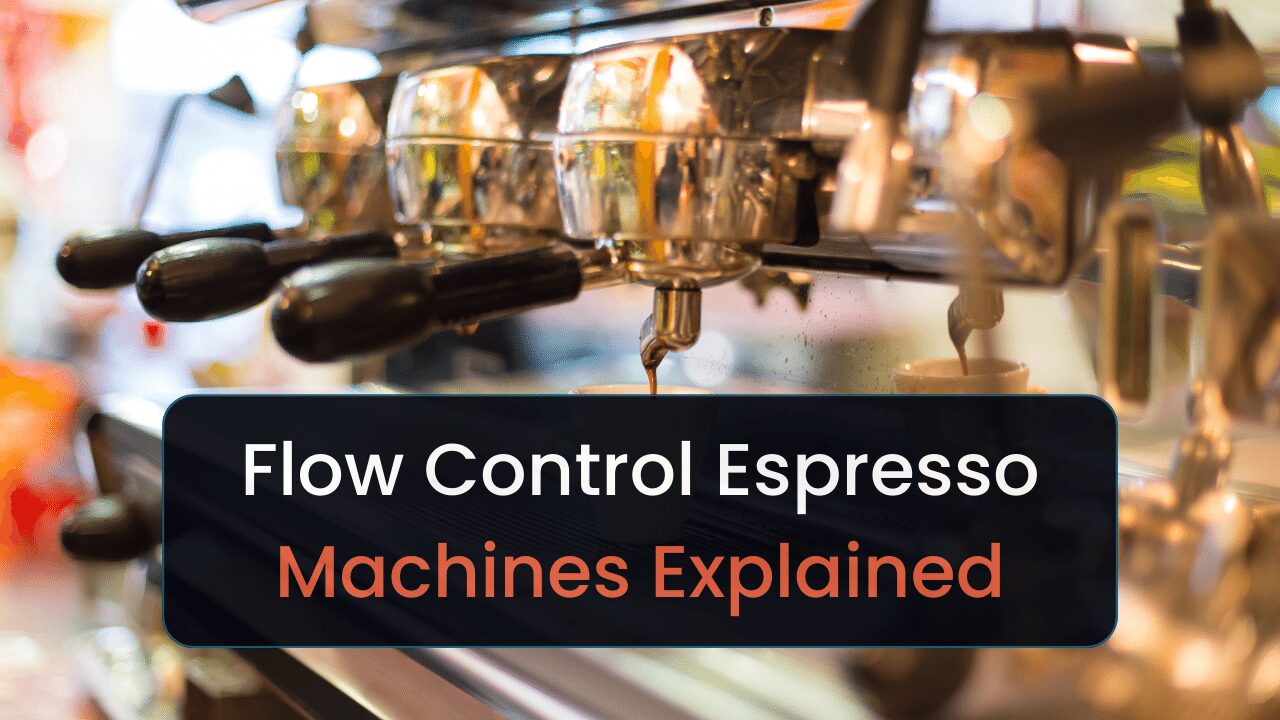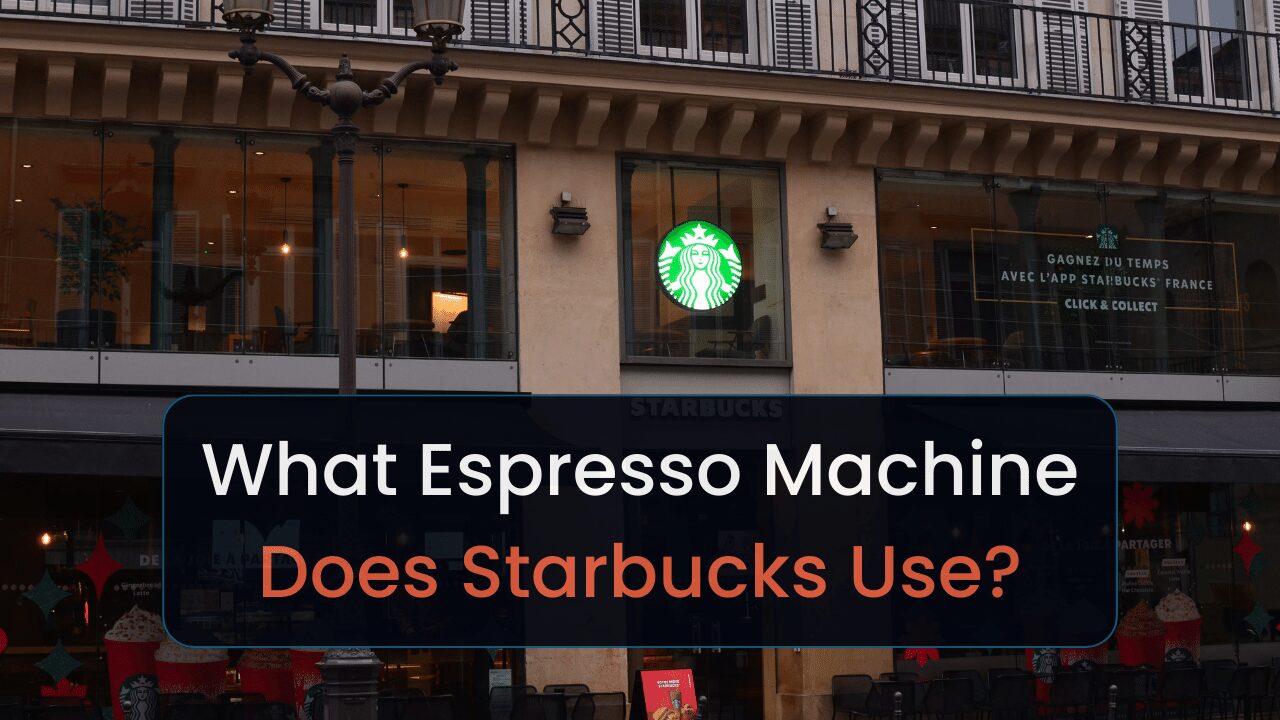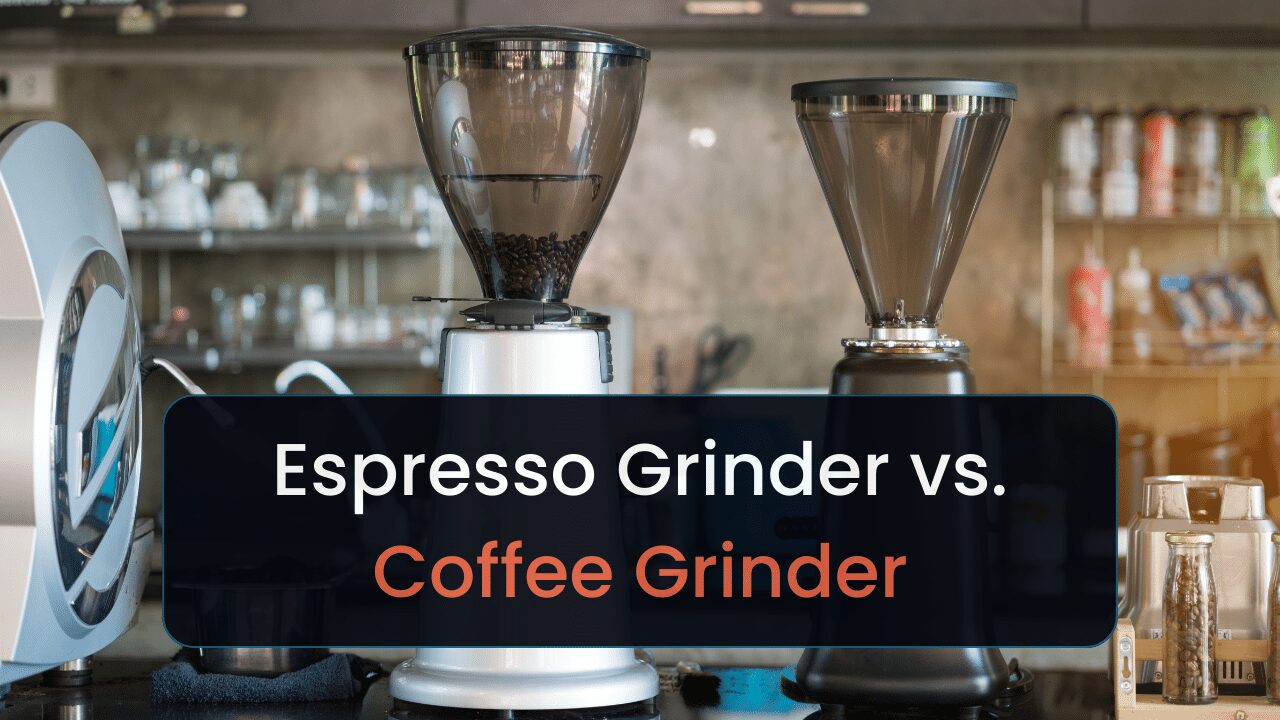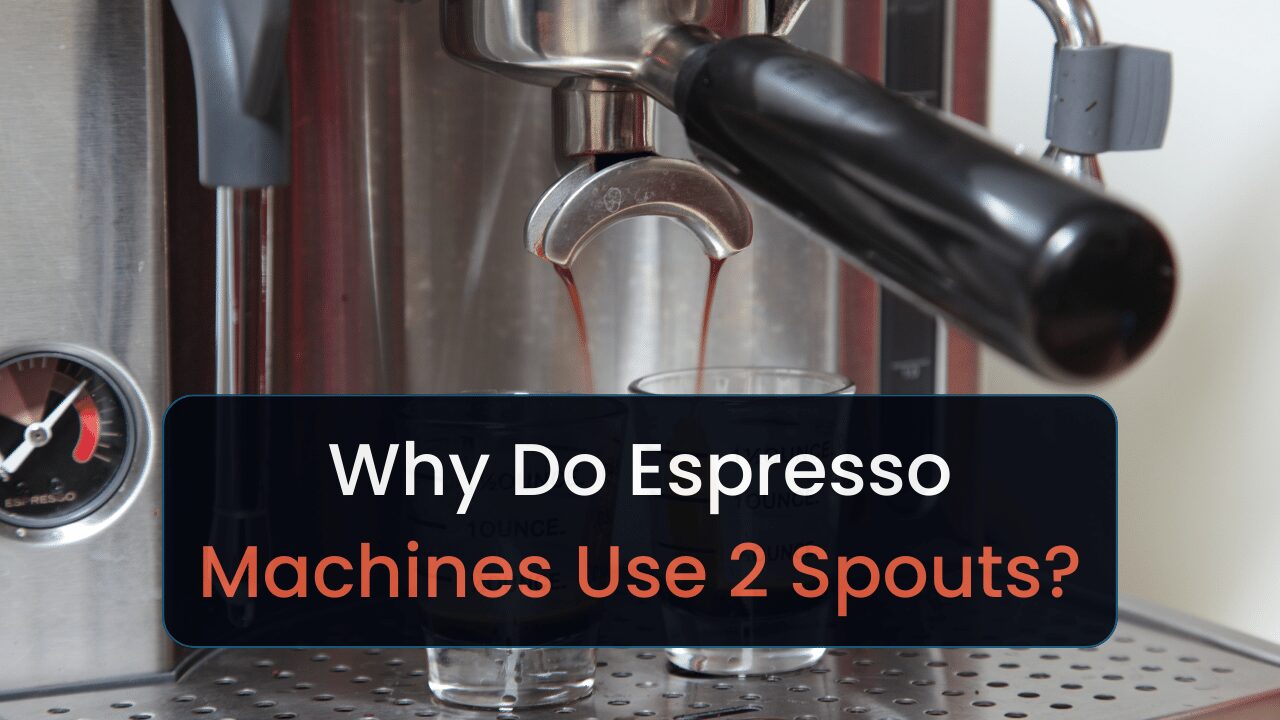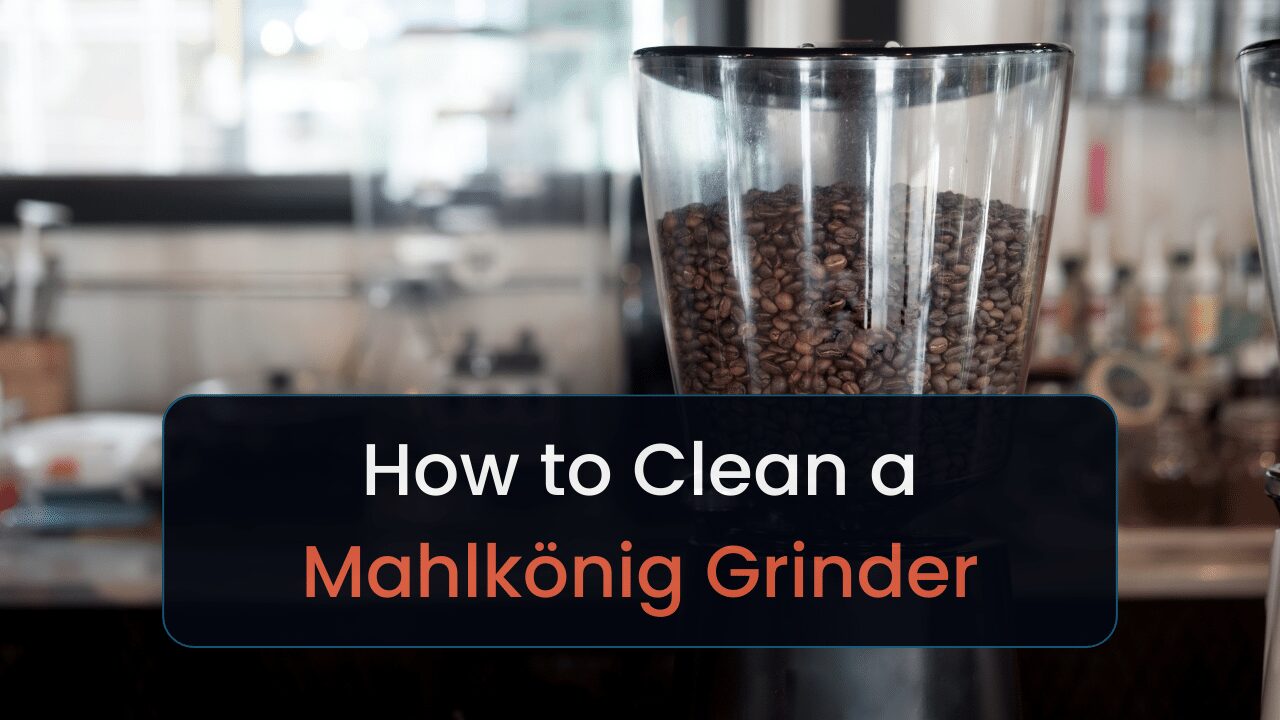This guide will compare commercial coffee grinders from CEADO and Mazzer. I didn’t include home-use models because Mazzer doesn’t offer any. Keep reading to learn more.
I’ve spent endless hours searching for a good coffee grinder for use in a coffee house I want to open. This guide will compare my findings when researching CEADO and Mazzer grinders.
I’ll compare specs, design choices, and explain which models are best for who and what purpose. When you’re done reading, you’ll know whether Mazzer or CEADO offers better models.
Here is an overview:
Let’s go.
Key Takeaways
- Most Mazzer grinders will come with dosers.
- Neither brand offers industrial coffee grinders.
- Mazzer doesn’t offer home-use models.
- Mazzer grinders, for the most part, work better for smaller shops.
CEADO vs. Mazzer Business Coffee Grinders
I’ll compare these grinders in the following sections:
- CEADO E5P: Most affordable
- Mazzer Mini Electronic A: Great for small coffee houses
- Mazzer Super Jolly: Most affordable doser grinder
- CEADO E37S: Great for multiple brewing methods
- CEADO E37J: Balances affordability and functionality for small shops
- Mazzer Mini: A decent choice for smaller cafés
- CEADO E6P: Best for coffee carts
- Mazzer Major V Electronic: Another worthy contender for high-traffic shops
- CEADO E37Z: Best for grinding for espresso in high-traffic shops
- Mazzer ZM Filter: Best for multiple brewing methods in high-traffic coffee shops
It’s not as bad as it looks (clutter-wise). I’ll compare the specifications and design choices of these machines in pairs. From there, I’ll explain whether each model is better to use for your coffee business.
Almost all Mazzer machines are for business use only and have dosers. That usually makes them more expensive than CEADO grinders.
I’d also usually include home models, but Mazzer doesn’t offer any grinders for home use. Mazzer also typically offers more expensive models than CEADO. That means you’ll find a lot of comparisons with huge price gaps.
Whether you opt for CEADO or Mazzer will boil down to whether you want a doser—for the most part. We compare the differences between doser and doserless grinders in a separate guide.
Let’s compare some grinders.
1. CEADO E5P vs. Mazzer Mini Electronic A
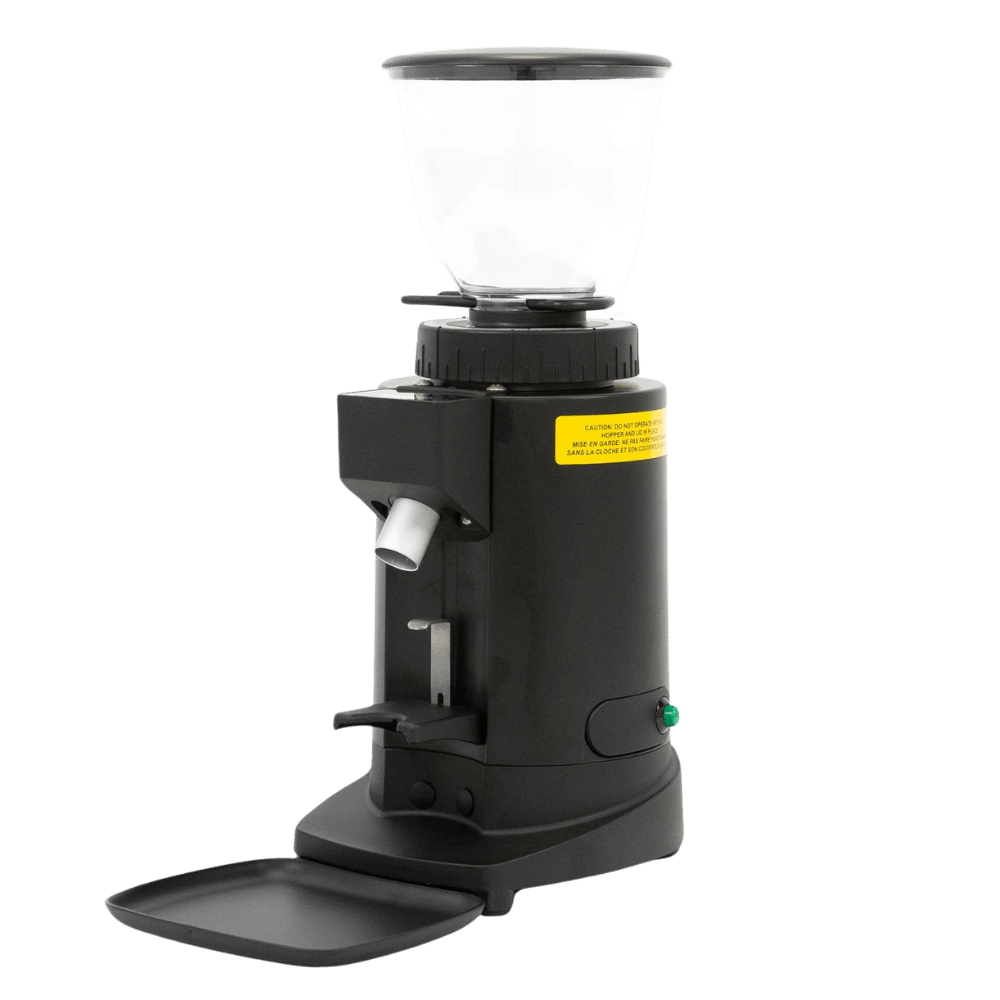
CEADO E5P
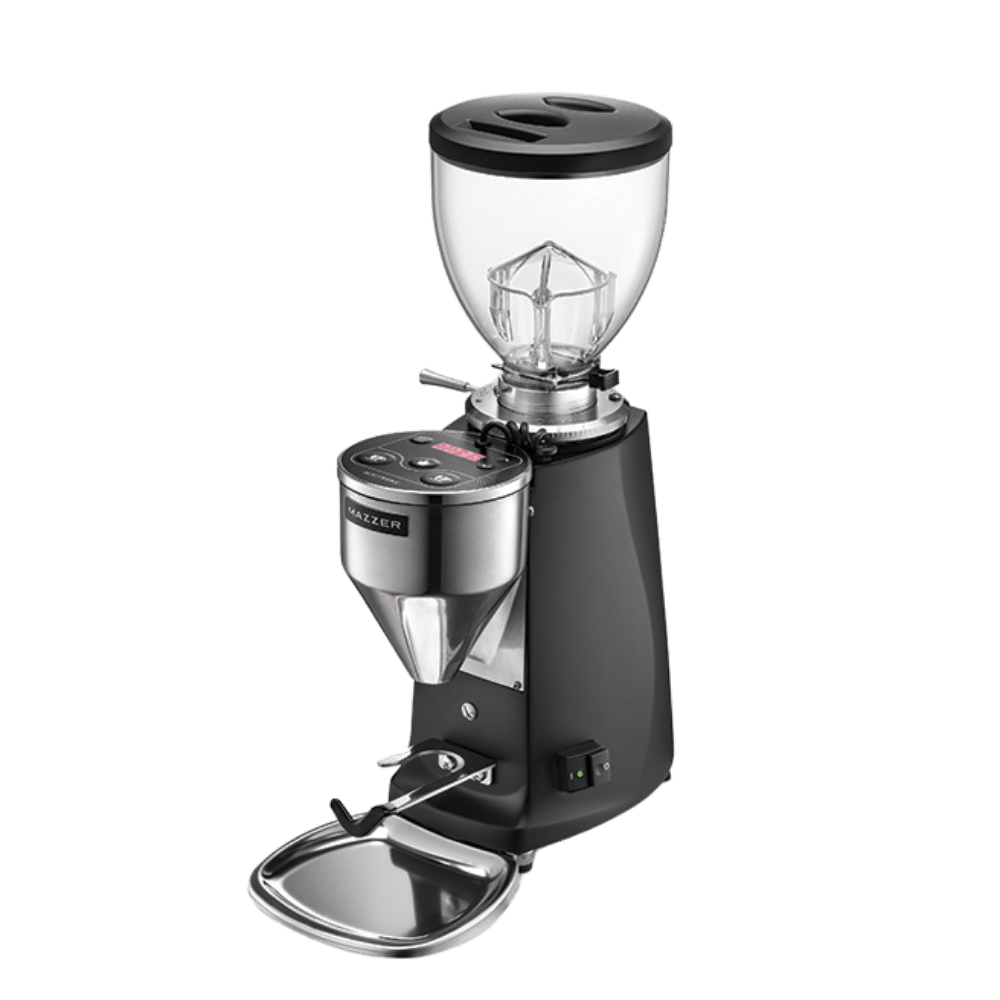
Mazzer Mini Electronic A
| E5P | Mazzer Mini Electronic A | |
| Price | $549 | $1,200 |
| Burr Shape | Flat | Flat |
| Material (Burr) | Steel | Steel |
| Diameter (Burr) | 64 mm | 64 mm |
| Hopper Capacity | 1.3 lbs | 3 lbs |
| Watts | 300 W | 250 W |
| RPM for Burrs | 1650 RPM | 1400 RPM (50 Hz) |
| 1600 RPM (60 Hz) | ||
| Net Weight | 19 lbs | 22.5 lbs |
| Dimensions (D × W × H) | 8.34 × 7 × 17.32 in | 7.75 × 6.75 × 18.5 in |
The Mazzer Mini Electronic A is better for low-traffic coffee shops that want to focus on multiple brew methods. The E5P works better for smaller coffee houses that want to focus on grinding for espresso drinks.
Why smaller shops? Both machines don’t have the largest burrs, which means that they won’t do the best job at grinding quickly. Larger burrs grind quicker and do a better job at dispersing heat.
Both factors are essential for shops with a lot of foot traffic.
I digress. The Mazzer Mini A costs more partially because of the electronic grind doser. This allows you to pre grind coffee grounds for multiple drinks and spit them out quickly. Making it a better addition for small shops during a rush.
The Mini A also has a much larger hopper than the E5P. Your team won’t need to refill the hopper as often, which could boost productivity.
And the Mazzer Mini A works better for multiple brewing methods due to having 1400 and 1600 RPM. The slower the speed, the more coarse grinds you’ll have in your coffee. The faster, the finer of grinds. That’s why the E5P works better for espresso.
Which Is Better?
They Mazzer Mini Electronic A works better for small coffee shops who have intense rushes. The CEADO E5P works better for small coffee shops on a budget.
2. Mazzer Super Jolly vs. CEADO E37S
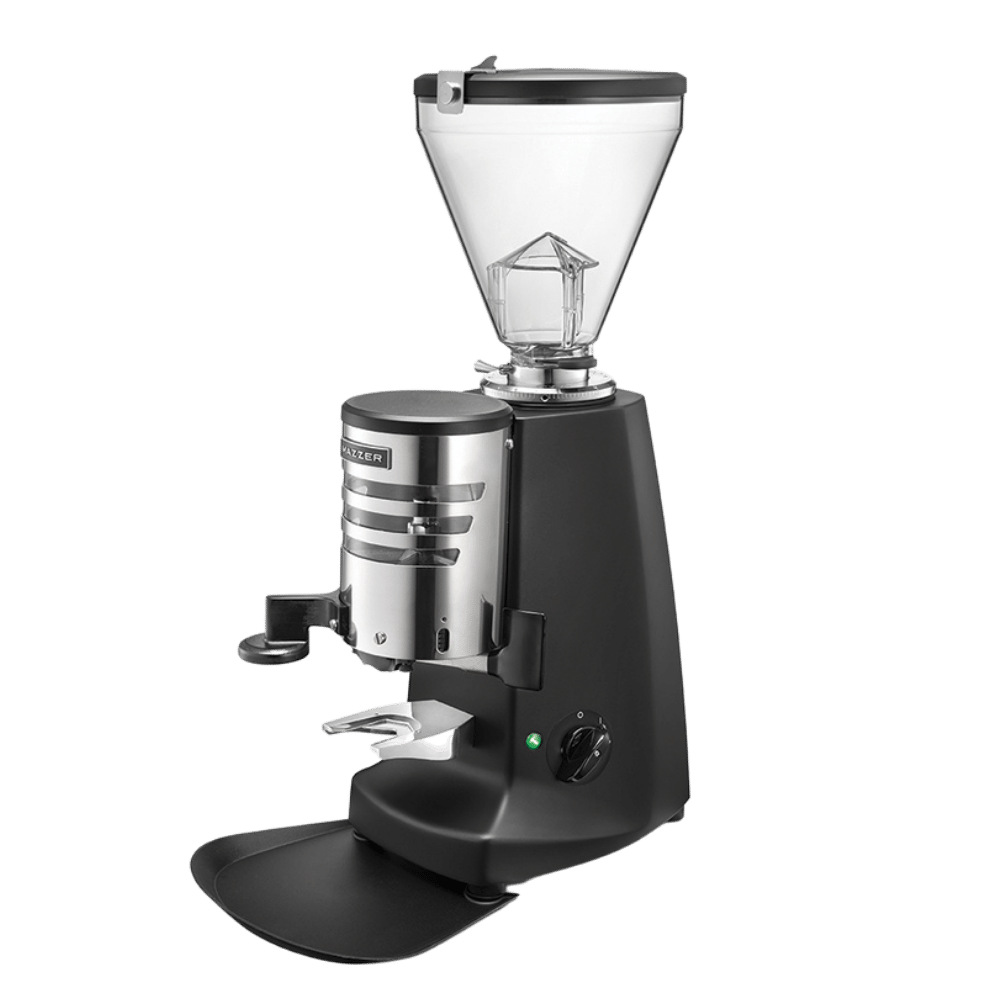
Mazzer Super Jolly
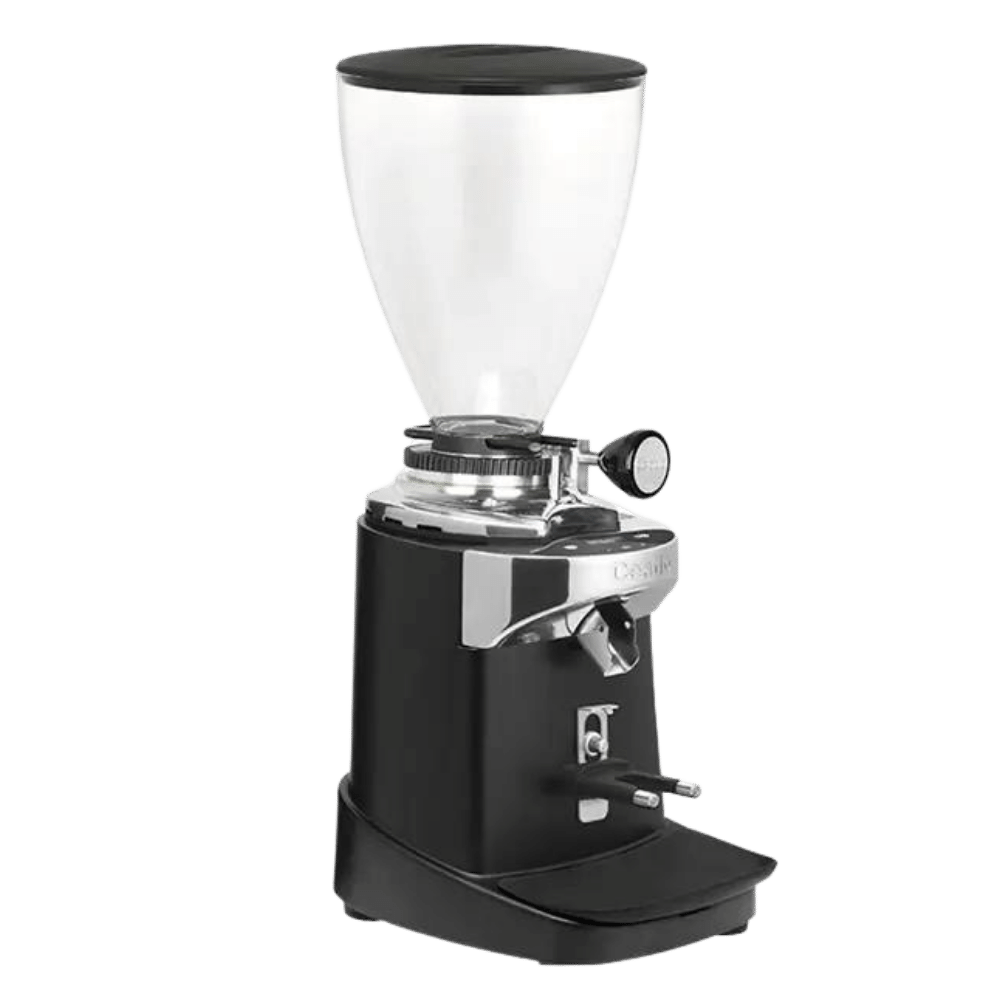
CEADO E37S
| Super Jolly | E37S | |
| Price | $924 | $1,785 |
| Burr Shape | Flat | Flat |
| Material (Burr) | Steel | Steel |
| Diameter (Burr) | 64 mm | 83 mm |
| Hopper Capacity | 2.64 lbs | 3.5 lbs |
| Watts | 350 W | 500 W |
| RPM for Burrs | 1600 RPM | 1480 RPM (50 Hz)1700 RPM (60 Hz) |
| Net Weight | 31 lbs | 26 lbs |
| Dimensions (D × W × H) | 16.5 × 31 × 23.5 lbs | 9 × 12 × 22 in |
The CEADO E27S works best for high-volume coffee houses for multiple brewing methods. The Super Jolly provides smaller shops a more affordable means to grind for slow and fast hours.
If it’s within your budget, and if you’re a high-traffic shop, the E37S is the obvious winner. It’ll grind up to 1,320 pounds of beans before requiring a burr replacement [1]. The Super Jolly will grind up to 881 pounds [2].
The larger burrs also allow the E37S to grind much quicker (5–6 grams per second) than the Super Jolly (3–4 grams per second). And they’ll disperse heat better due to having a larger surface area. The less heat, the less likely you’ll burn your beans.
The larger capacity on the E37S means you won’t need to refill the hopper as often. A great productivity boost for your team. And the lower net weight on this machine makes it suitable for use with a coffee cart that gets a lot of foot traffic.
Considering, you’ll need to load and unload it frequently. A lighter weight device would work wonders on your back.
Otherwise, I shed a tear comparing these devices because of how much of an unfair advantage the E37S has. It is pricier, but it’s more durable and suitable for larger shops.
Which Is Better?
The CEADO E37S works better for larger coffee shops due to having larger, more durable burrs and a bigger hopper. The Super Jolly works better for smaller shops that don’t have a large budget.
3. CEADO E37J vs. Mazzer Mini
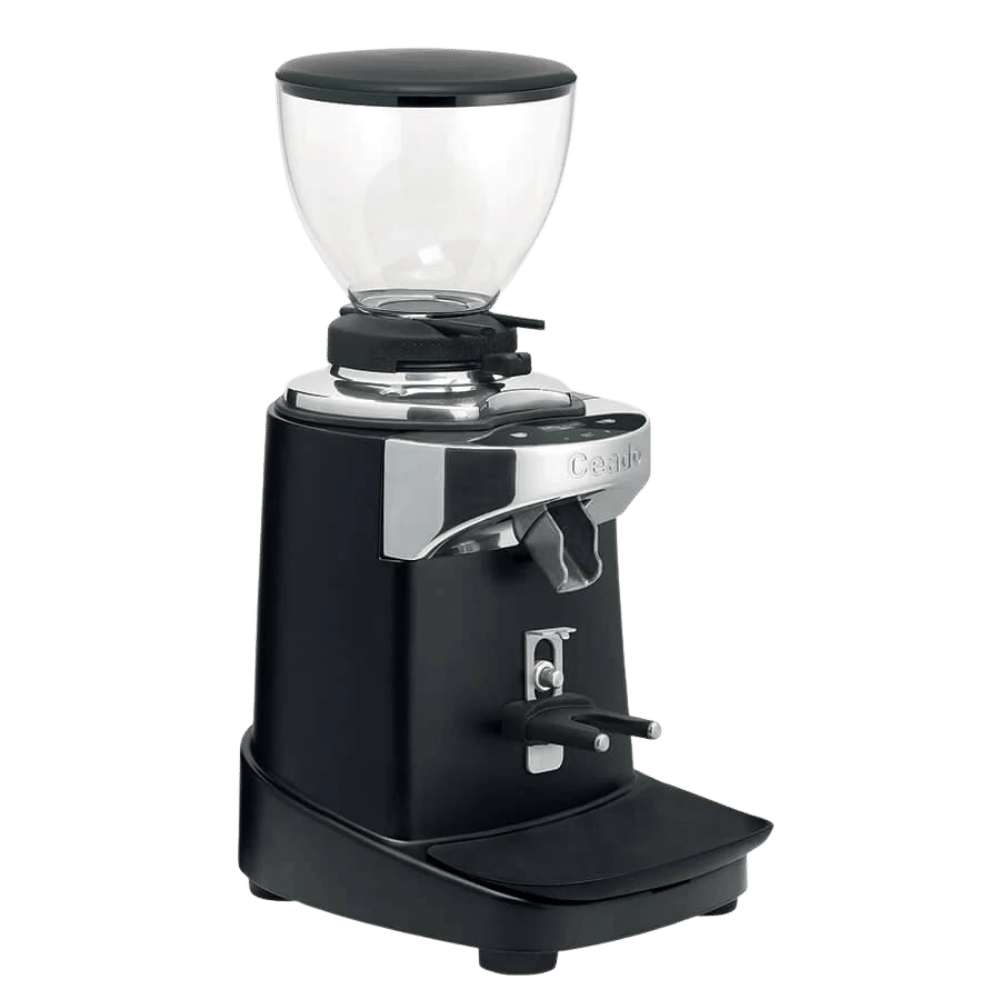
CEADO E37J
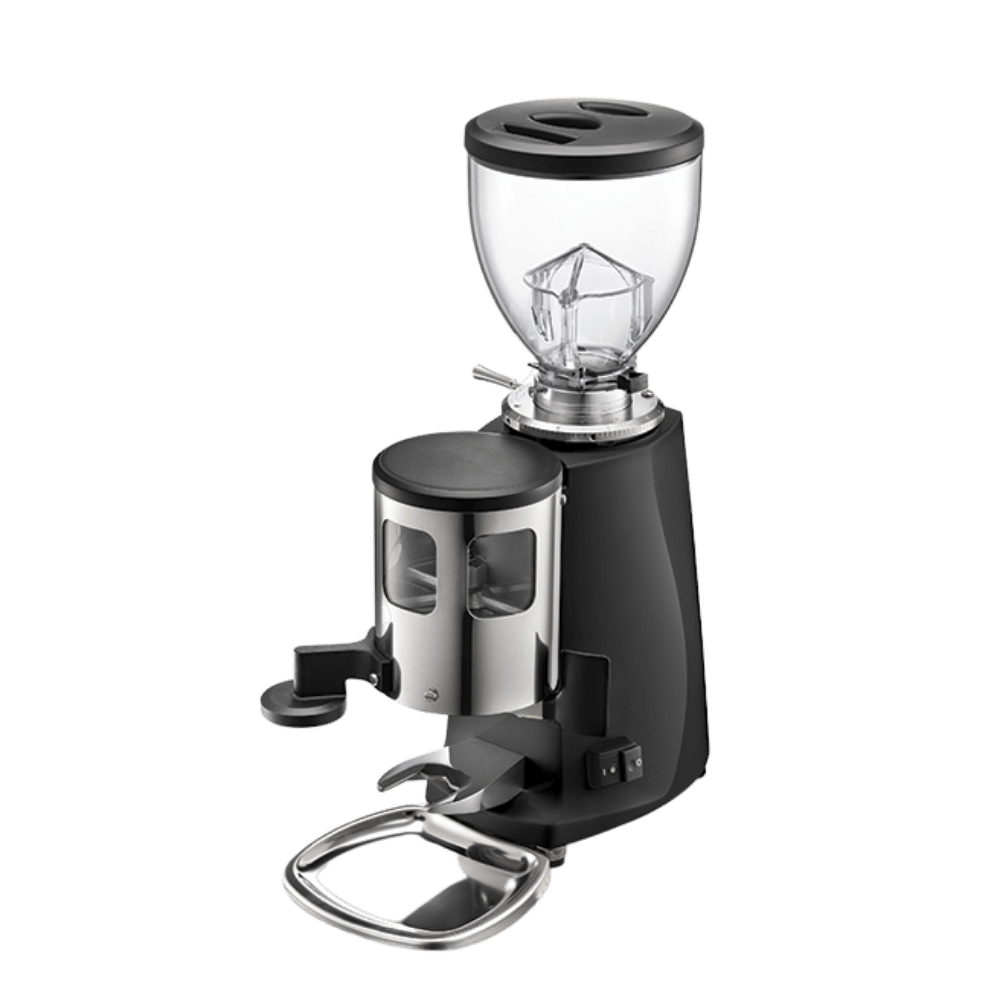
Mazzer Mini
| E37J | Mini | |
| Price | $1,099 | $792 |
| Burr Shape | Flat | Flat |
| Material (Burr) | Steel | Steel |
| Diameter (Burr) | 64 mm | 58 mm |
| Hopper Capacity | 1.32 lbs | 589 g |
| Watts | 300 W | 250 W |
| RPM for Burrs | 1650 RPM | 1600 RPM |
| Net Weight | 20.9 lbs | 22.7 lbs |
| Dimensions (D × W × H) | 12.2 × 8.3 × 17 in | 11 × 22.5 × 16.5 in |
The CEADO E37J works better with grinding for espresso in small cafés and restaurants. The Mazzer Mini will work better for grinding large amounts of coffee quickly during a rush. For small coffee houses.
Both grinders don’t have the largest burrs. I wouldn’t use either for medium- to high traffic businesses. Without larger grinds, they don’t grind as quickly and disperse heat as well. And without dispersing heat well, you risk burning your beans.
The Mazzer Mini will do better during rushes because it has a doser. It allows you to store different types of grinds in a doser chamber. Then, once you’re ready to add them to your portafilter, you spit them out of the chamber.
The E37J is better for grinding espresso because it has slightly higher RPM than its competitor. Finer grinds require more revolutions per minute. Because the faster the machine grinds, the finer, more even grinds that come out.
There’s nothing else special with either machine to consider, except. Why’s the CEADO E37J more expensive?
Partially because of the brand name. Also, likely because of the burr durability. The Mazzer Mini will grind up to 660 pounds of beans before requiring a replacement. The E37J will grind up to 880 pounds [3].
Which Is Better?
The CEADO E37J is more durable, grinds faster, and has a higher RPM than the Mazzer Mini. Making it better for most use cases in a coffee house. The Mazzer Mini is better because it’s cheaper.
4. CEADO E6P vs. Mazzer Major V Electronic
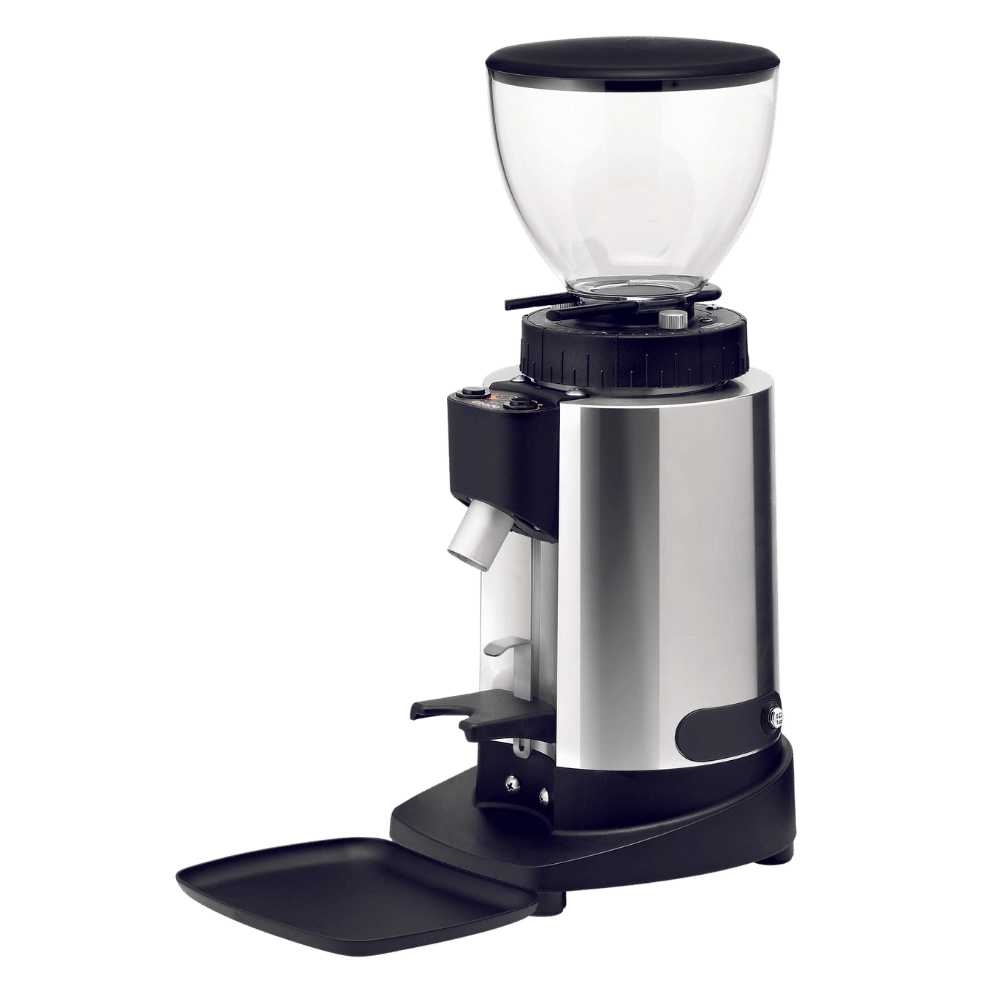
CEADO E6P
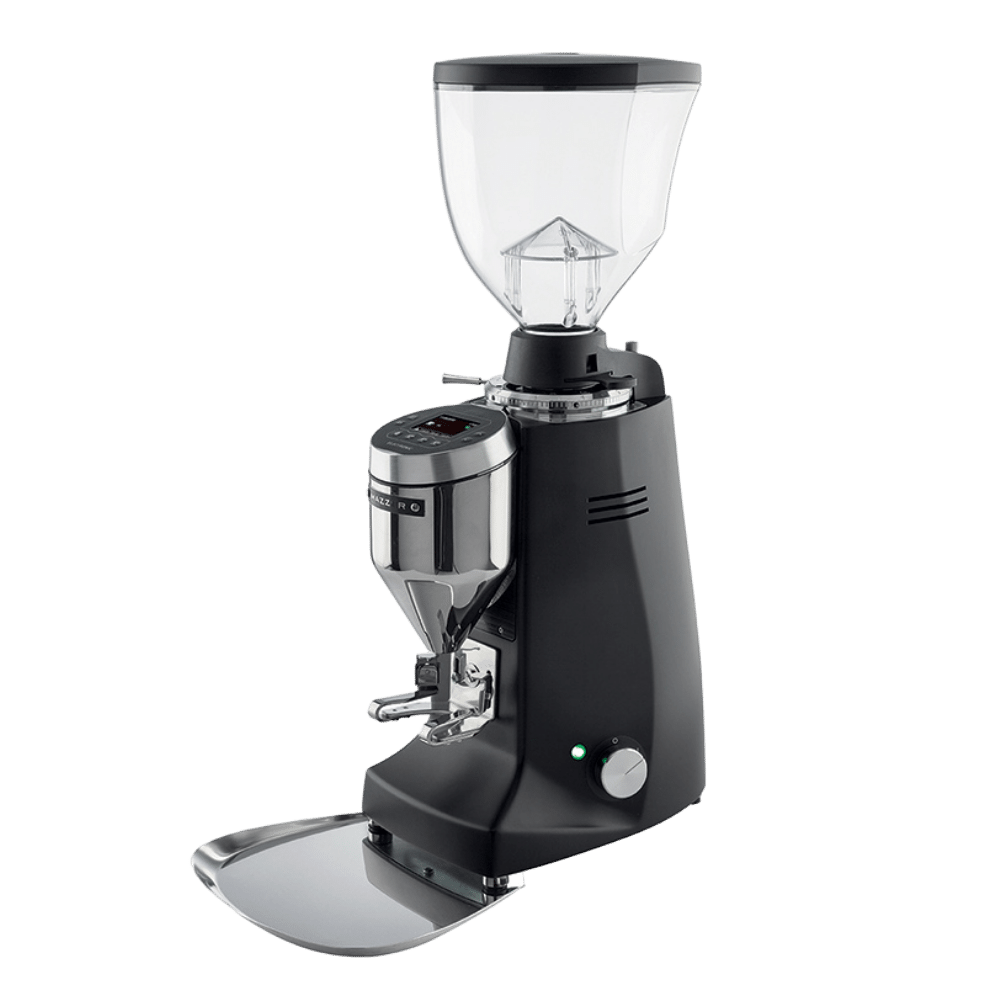
Mazzer Major V Electronic
| E6P | Major V | |
| Price | $920 | $2,220 |
| Burr Shape | Flat | Flat |
| Material (Burr) | Steel | High carbon steel |
| Diameter (Burr) | 64 mm | 83 mm |
| Hopper Capacity | 1.3 lbs | 3.5 lbs |
| Watts | 300 W | 650 W |
| RPM for Burrs | 1380 (50 Hz)1650 (60 Hz) | 1400 RPM (50 Hz)1600 RPM (60 Hz) |
| Net Weight | 19 lbs | 45.2 lbs |
| Dimensions (D × W × H) | 7 × 9 × 18 in | 18.75 × 10 × 26 in |
The Mazzer Major V Electronic is best for high-traffic coffee shops. The CEADO E6P is a better choice for coffee carts or small coffee shops.
Why?
The E6P has small burrs, which makes it unideal to handle grinding a lot of rounds of beans in a row. Larger burrs have less retention, grind quicker, and generate less heat due to having a larger surface area.
However, the E6P can handle light traffic. And it doesn’t weigh much, making it ideal for coffee carts. Since you’ll need to move it around frequently.
The Major V Electronic is also nice for international markets since it has 19 different languages for the control panel. However, I couldn’t find any information on what languages it supports. Wouldn’t that be helpful to know?
Anyway. Why’d I compare these when there’s such a huge price gap? The E6P is one of CEADO’s pricier machines. Plus, it has multiple grind speeds to support various brewing methods, like the Major V.
The E6P is slower at 50 hertz, making it a bit better for producing coarse grinds. The slower the machine grinds, the more uneven of a resulting grind. And the faster, the finer. The table shows that the E6P also grinds a bit faster.
It doesn’t make a difference, since you’ll use these for different scenarios. But it’s helpful to know.
If you’re wondering why the Major V Electronic is much more expensive, look toward the “Electronic” part of the name. Along with the support for 19 unknown languages, it also has Internet of Things (IoT) support and a dual fan cooling system.
The former includes features such as statistics, which’ll show you how much you grind daily. The latter works better for keeping your machine cool under pressure. And the cooler it is, the longer its lifespan.
Which Is Better?
The Mazzer Major V Electronic is superior when used for high-traffic businesses due to its arsenal of features and large burrs. The E6P is smaller and more affordable, which makes it great for small chops and coffee carts.
5. CEADO E37Z vs. Mazzer ZM Filter
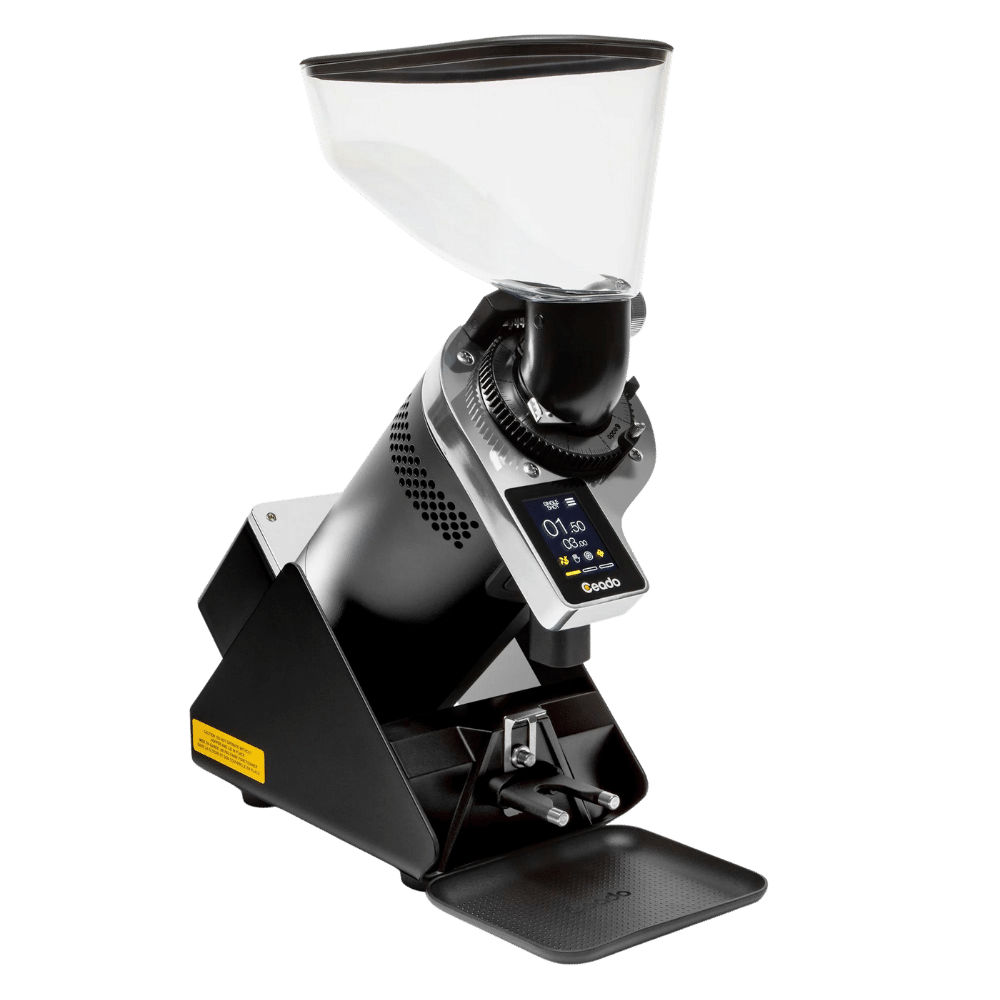
CEADO E37Z
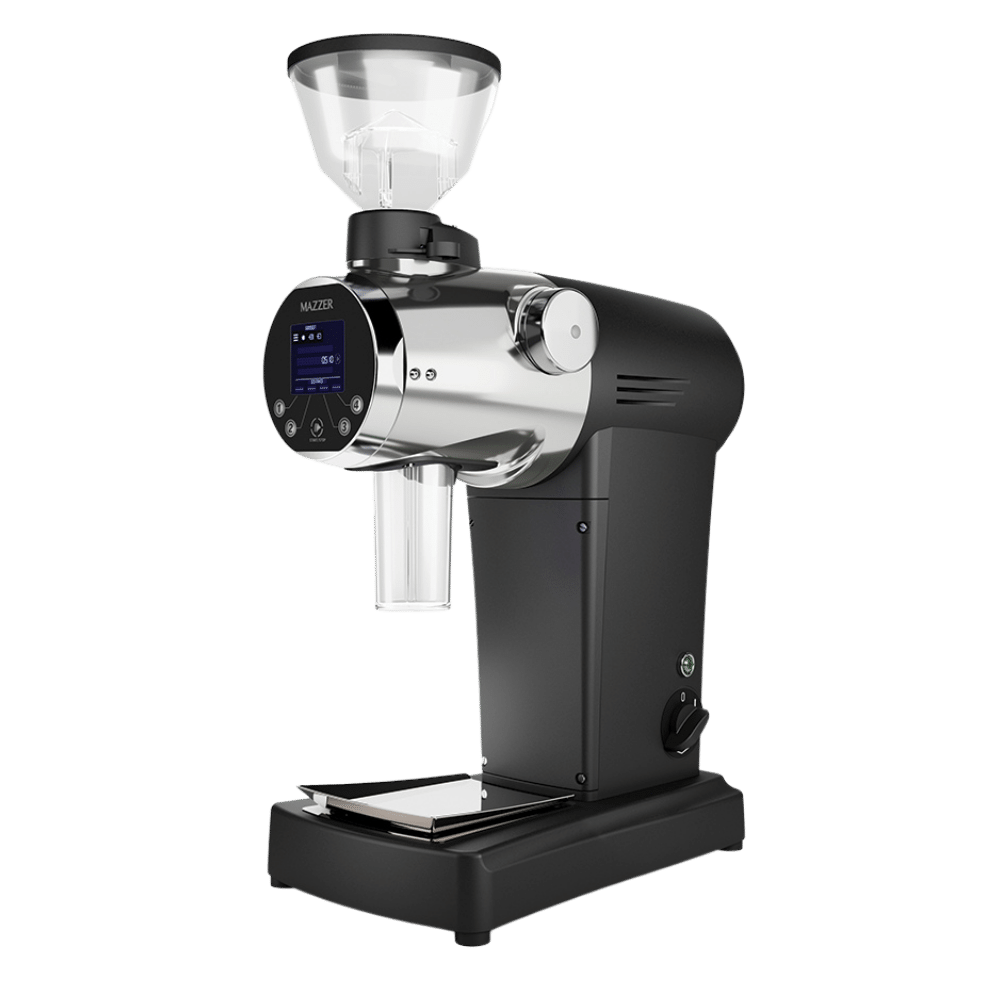
Mazzer ZM Filter
| E37Z | ZM | |
| Price | $3,850 | $3,960 |
| Burr Shape | Flat | Flat |
| Material (Burr) | Steel | Special steel |
| Diameter (Burr) | 83 mm | 83 mm |
| Hopper Capacity | 2.6 lbs | 0.7 lbs |
| Watts | 900 W | 800 W |
| RPM for Burrs | 1700 RPM (60 Hz) | 1050 RPM |
| Net Weight | 41.5 lbs | 77 lbs |
| Dimensions (D × W × H) | 7.9 × 16.5 × 21.7 in | 9.65 × 25.39 × 16.93 in |
The CEADO E37Z is a fantastic choice for grinding espresso in high-traffic coffee shops. The Mazzer ZM works better for coarse brewing methods.
The difference in brewing methods each machine supports boils down to the revolutions per minute (RPM). The ZM uses fewer revolutions, which means the grinds will come out more coarse.
The more coarse grinds make it better for grinding pour-over, filter, cold brew, and other brewing methods that require coarse grinds. And it’ll save up to 20 grinding positions, which makes grinding for multiple methods much easier and quicker.
The E37Z uses more RPMs, making it better for grinding espresso and Turkish coffee. Because the faster the machine grinds, the less coarse grinds you’ll have mixed with your coffee.
Otherwise, there’s not much comparison between these machines. It’s obvious when you’ll pick either.
Which Is Better?
The CEADO E37Z works better for grinding espresso in high-traffic coffee houses. The Mazzer ZM Filter works better for coarse grinds in busy coffee houses.
Each Company’s History
Check out each company’s history to see if they align with what you’re looking for with a brand.
Why’s this important? It’ll help you determine whether each brand is actually passionate about coffee-making and whether they’ll provide worthy grinders.
With that said, keep reading.
1. CEADO Company History
Venetian coffee grinder apprentice Egidio Girardi established CEADO in 1952. Specializing in handcrafted coffee grinders and fruit juicers.
The company later transitioned to Michele, Egidio’s eldest son. However, details about its subsequent history and achievements remain elusive despite my search.
On to Mazzer’s history.
2. Mazzer Company History
Italy, 1930s, Mazzer began [4].
By 1948, visionary Luigi Mazzer, in Venice’s embrace, steered them towards a different grind—coffee, professional and precise.
The 50s saw Mazzer perfect the art, their burrs and grinders a symphony of meticulous engineering.
International acclaim soon followed, their machines crossing the Atlantic, reaching American shores and French cafés. 1976 saw the iconic Jolly join the stage, followed five years later by the Super Jolly.
1988 marked a changing of hands. Luigi passed the torch, and under Giovanni, Mazzer entered a new era. They blossomed, moving to a 7,000-square-meter factory.
Today their grinders gracing cafés in more than 100 countries, across 5 continents.
Do you need to consider other coffee grinder brands? We have you covered.
Further Reading
Mazzer and CEADO aren’t the only coffee grinder manufacturers in the game. I suggest continuing your research with our other comparisons, like:
These guides will introduce you to additional brands you should consider before buying a grinder.
Otherwise, thanks for reading.
Conclusion
Mazzer only offers business grinders, and they often have dosers, making them more expensive. CEADO grinders do a better job at balancing affordability and features. If you don’t like the models both brands offer, consider other coffee grinder brands.
I suggest looking at all the Mazzer models we offer if you want to do further research on them.

